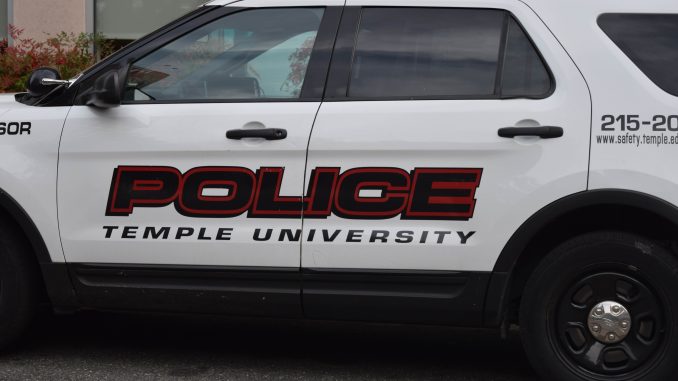
Temple University’s Campus Safety Services’ taser usage has increased during the last four years while baton usage has become gradually obsolete, said Charles Leone, executive director of Campus Safety Services. A use of force report must be filed every time a taser or baton is used, he added.
Temple’s Police Department purchased an additional 20 tasers and began requiring all officers to carry them to reduce lethal interactions during police encounters after two Philadelphia police officers with no nonlethal weapons killed Walter Wallace Jr., a Black man experiencing a mental health crisis, in October 2020, The Philadelphia Inquirer reported.
Prior to 2020, TUPD did not require all campus police officers to carry a taser while on patrol, Leone said. Carrying a taser enables an officer to handle a combative person without using lethal or brute force, he said.
“When a person becomes aggressive or combative, you are obviously not going to want to use deadly or lethal force,” Leone said. “The taser is one of the tools that you can use.”
TUPD requires all officers to carry a baton even though reports show that batons are used less than once a year, Leone said.
The City of Philadelphia announced on Oct. 26, exactly one year after Walter Wallace Jr.’s death, a $14 million initiative which will train and equip all city police officers with tasers.
“To me the initiative kind of implies that tasing someone is not violent,” said Carol Gallo, an intellectual heritage professor and former member of Defund TUPD, a group advocating for the disbanding of TUPD. “To force someone into a position where they taze is also violent.”
TUPD trains its officers in taser use in two separate training sessions, Leone said. The first training familiarizes officers with alternatives to lethal force and the second involves teaching officers how to properly deploy and operate the tasers, he said.
TUPD also trains its officers in mental health awareness and how to intervene with a taser in a situation involving a mental health crisis instead of with lethal force, Leone said.
In the weeks following Wallace’s death, his family advocated for policing reforms including increasing nonlethal weapon options, which could have prevented Wallace’s death, The Philadelphia Inquirer reported.
Temple police officers’ tasers are connected to the officer’s body-worn camera that records all content the moment a taser is taken out of its holster, including the previous 30 seconds of footage, which is uploaded to Axon’s cloud-based storage program, an online system that stores evidence and records, and is kept for a minimum of 75 days, Leone said.
“Everything that is done with the taser is up on the cloud so it’s not like you can use a taser and say ‘oh, it wasn’t me’,” Leone said.
However, tasers are not always effective in defusing a situation and can lead to officer misconduct, said Anthony Erace, acting executive director of the Philadelphia Police Advisory Commission.
“If you have a taser it’s tremendously important to not only just train on the use of the tasers, but make sure you’re trained on when to use a taser,” Erace said.
Tasers can be valuable in deescalating a situation without causing death, however, they can allow police officers to avoid social interaction and more easily rely on force to take control of a situation, Erace said.
“When you have a tool, you tend to use it and default on it,” Erace said. “Firing a taser is easier than talking because it doesn’t require any creativity or nuance.”
Taser usage should be monitored and there should be a clear use of when they should and should not be used, wrote Jerry Ratcliffe, a criminal justice professor, in an email to The Temple News.
Adding more options to further reduce their need to resort to lethal weapons is a good thing and should be encouraged, Ratcliffe added.
TUPD follows a use-of-force continuum, which qualifies tasers as a non-lethal method of de-escalating a situation, Leone said.
Tasers are conducted energy devices, meaning they use high-voltage electricity at a distance to maintain a situation, according to the National Institute of Justice.
TUPD used to equip their officers with only a handgun and baton, Leone said. The department now uses less-lethal methods like pepper spray and tasers to reduce the use of guns, he said.
“The opportunity is greater to use a taser,” Leone said. “Which is what we want because we want our officers to use the least amount of force that they can to control a situation.”


Be the first to comment